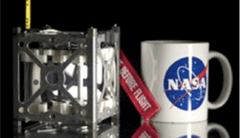Smartphones In Space
on

A team of engineers in NASA's PhoneSat project at the Ames Research Center in California aims to accelerate satellite architecture evolution by applying the Silicon Valley approach of “release early and often” to small spacecraft. To this end, they are making extensive use of commercial off-the-shelf components, including normal smartphones. Smartphones incorporate many capabilities needed for satellite systems, including fast processors, versatile operating systems, multiple miniature sensors, high-resolution cameras, GPS receivers, and several radios.
The PhoneSat team is also changing the way missions are designed, by rapidly prototyping and incorporating existing commercial technologies and hardware. This approach allows engineers to see what commercial technologies can provide, instead of developing custom solutions to meet set requirements. The capabilities of the entire satellite can be upgraded rapidly, and new features can be added in each future generation of satellites.
Each PhoneSat nanosatellite is one standard CubeSat unit in size and weighs less than four pounds (2.4 kg). A CubeSat is a miniaturized satellite in the shape of a cube that measures approximately 4 inches (10 cm). The prototype smartphone satellite, known as PhoneSat 1.0, is built around a Nexus One smartphone with the Android operating system, which acts as the spacecraft onboard computer. Sensors determine the orientation of the spacecraft, and the smartphone's camera can be used for Earth observations. The basic mission goal of PhoneSat 1.0 is to survive in space for a short period of time, while sending back digital imagery of the Earth and space and information about the satellite's health.
The next generation, PhoneSat 2.0, will incorporate a Nexus S smartphone with the Android operating system to provide a faster core processor, avionics and gyroscopes. It also will augment the capabilities of PhoneSat 1.0 with a two-way S-band radio to enable ground-based command and control, solar panels to enable longer-duration missions, and a GPS receiver. In addition, PhoneSat 2.0 will have electrotorque coils, which interact with the Earth's magnetic field, and reaction wheels to actively control the satellite's orientation.


Discussion (0 comments)